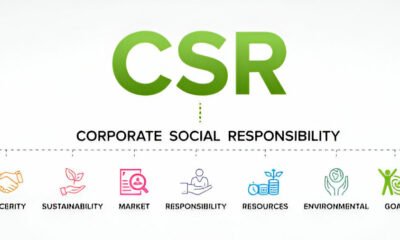

Features
‘You want us to produce one of those corporate socialist reports?!’
Seb Beloe, partner and head of sustainability research at WHEB Asset Management, looks back at the history of sustainability reporting to see how it has evolved.
“You want us to produce one of those corporate socialist reports?!” This incredulous response, from the CEO of a large US conglomerate, may not be the typical reaction that we get from companies (a raised eyebrow is much more common in London) but it does belie a deep-seated misunderstanding about the role and value of sustainability reporting.
In case you’ve not been watching, sustainability reporting has become a sizeable industry. CorporateRegister.com, a consultancy that monitors the global output of reports every year, estimates that in 2011 there were approximately 6,600 reports (including corporate responsibility, sustainability, environmental and other similar reports) – up from less than 1,000 10 years ago and just 40 in 1992.
But is all this effort really worth it? As investors, should we even bother to read these reports?
This was the question posed by one of my WHEB colleagues, as part of a review of how we might refine our examination of environmental, social and governance (ESG) issues as a core part of our stock analysis. He had recently returned from a seminar on integrated reporting where the reliability of sustainability reports as a source of information on companies was put under the spotlight (see his subsequent blog here).
Our starting point is that many environmental and social issues are directly relevant to company strategy and operations. Whether it is growing resource scarcity affecting the price and volatility of commodities, population and demographic change driving skills shortages, or rapid evolution in technology that is arguably enabling a more active and influential citizenry, the world is changing and companies need to respond.
Fundamentally, we review sustainability reports (as well as other corporate literature) as a way of getting a better reading on how an individual company understands this agenda, and how it is adjusting.
Unfortunately, sustainability reports are often seen as an opportunity to spout trite public relations guff. They can also be very lengthy. We do nonetheless think that they are worth reviewing, but it is important to sort the ‘wheat from the chaff’.
A decade ago, the consultancy and research group SustainAbility (where I was head of research and advocacy from 2003-2007) published a typology of corporate reports which is still a useful framework today.
At one end of the spectrum are the ‘corporate truants’. Originally of course, companies were remarkable for producing a corporate sustainable or environmental report. Today it is the non-reporters who are more noteworthy.
Next to the non-reporters are the ‘corporate cosmetics’ – ‘pretty pictures and PR piffle’ as one colleague pithily put it.
The corporate ‘nerds’ present a more challenging conundrum for us as investors. Volumes of data obscure the ‘wood for the trees’ and as the original SustainAbility report put it, “Corporate nerds operate at the MS-DOS level, needing someone else to provide the equivalent of Windows user-friendliness”.
The final two reporting categories, the ‘virtuosos’ and the ‘supersonics’, are thankfully much more common today than they were in 2002. These companies focus explicitly on the strategic implications of the sustainability trends outlined above.
As investors, we believe that companies that understand how their business is impacted by these trends (and vice versa) are better at navigating 21st century markets and will therefore outperform their peers in the long run.
These reports also provide clear evidence of how their business is configured to manage these issues appropriately. For example they will describe the structures and incentives that are in place to focus management on critical ESG issues. They will also provide data on performance, with indicators that are clearly aligned with the company’s underlying business strategy, and with the commercial significance underlined.
In many ways, the most sophisticated companies have dispensed with sustainability reporting altogether.
A core failing of environmental or sustainability reports has always been that their audience is almost never clearly defined. In reality they are a ‘catch-all’ designed for everybody, and nobody.
That is not to say that nobody is interested in what they contain, but there are much better ways to disseminate this to customers through marketing and advertising, to regulatory authorities through regulatory submissions, to suppliers through procurement codes or to investors through annual financial reports.
The efforts of the International Integrated Reporting Council (IIRC) are, at least from an investment perspective, particularly critical. The framework that this initiative is developing is expected to define the key parameters of what corporate reporting, sustainability or otherwise, will look like and in the process hopefully put paid once and for all to notions of ‘corporate socialist reporting’.
Seb Beloe is a partner and head of sustainability research at WHEB Asset Management. This article originally appeared on WHEB’s blog.
Further reading:
Lies, damned lies and sustainability reports
Has CSR reached its sell-by date? Part 1


 Environment10 months ago
Environment10 months agoAre Polymer Banknotes: an Eco-Friendly Trend or a Groundswell?

 Environment12 months ago
Environment12 months agoEco-Friendly Home Improvements: Top 7 Upgrades for 2025

 Features9 months ago
Features9 months agoEco-Friendly Cryptocurrencies: Sustainable Investment Choices

 Features10 months ago
Features10 months agoEco-Friendly Crypto Traders Must Find the Right Exchange




























